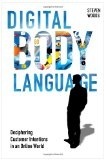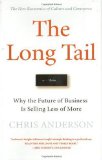Book Review – Digital Body Language by Steven Woods
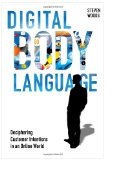 Over the past 10 years, we have seen the Internet and now Web 2.0 and social media technologies drastically change how marketers and public relations professionals engage with prospects, customers, employees and influencers online. As much of this interaction is being done online, the challenge is how marketers can “read” the digital signals to determine interest and intent. In a nutshell, how to provide the right information, to the right person, at the right time.
Over the past 10 years, we have seen the Internet and now Web 2.0 and social media technologies drastically change how marketers and public relations professionals engage with prospects, customers, employees and influencers online. As much of this interaction is being done online, the challenge is how marketers can “read” the digital signals to determine interest and intent. In a nutshell, how to provide the right information, to the right person, at the right time.
That is the premise of Steven Woods’ book, Digital Body Language. As co-founder of Eloqua, a marketing automation company, Steven provides insight into how marketers can translate these digital signals to increase the effectiveness of their marketing programs.
While the book is written with the marketer in mind, PR practitioners can benefit by reading this book as well. The step-by-step look into the customer’s digital psyche will help PR professionals understand the challenges that their marketing counterparts face. PR can help marketers understand behavior triggers; thereby recommending strategies, content and programs that drive these objectives forward. PR moves from being a “brand awareness” vehicle to a strategy that can pinpoint why and what will impact a customer’s behavior and interest.
For example, most executives want to business coverage regardless of how this coverage will or will not impact the bottomline. Yet, you strongly recommend a vertical program based on budget, time and objectives. If you can highlight how a vertical outlet program drove X% interest target prospects which uncovered $X in sales opportunities for a similar client, then not only will C-Level executives pay attention, but PR will also earn a seat at the table.
Isn’t this a strong value proposition?!
Conclusion
Steven provides marketers an understanding of the new digital body language. His approach is straight-forward with case studies to provide real-world implentation stories combined with helpful tips. I recommend this book for all PR practitioners and those entering the marketing field.
Let me know what you think of the book below in the comments or if you have any other must-read books.
I met Steven Woods at the Eloqua Experience 2010 Conference in October 2010.
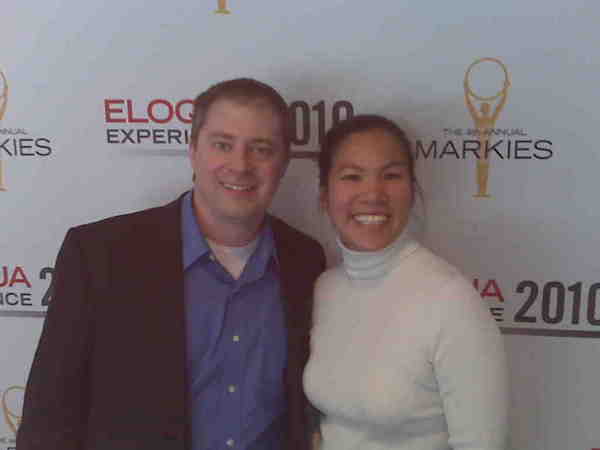
Beware of “Speeds and Feeds” PR

Photo by Gregg Salomon
When kick-starting a PR program, the main challenge is creating awareness about the company, executives and products/services within the industry and to prospective customers. In the pursuit of immediate results, the tendency is to pitch and secure media coverage about the features and functions of a product or solution. And based on this initial success, subsequent PR efforts solely focus on product upgrades, improvements and other similar “speeds and feeds” details.
However, focusing on speeds and feeds has its drawbacks:
* Elevating product over value proposition. Your company becomes known for the product features and functions versus the value proposition that your company solves, which
* Pigeon-holes your company in the minds of your customers, prospects and influencers. This creates a situation where you have
* Minimal thought leadership compared against your competitors. Your company is seen as providing a specific product versus positioning your company executives as thoughts leaders who are driving the industry forward.
* And this hinders your consultative sales efforts. Your salesforce requires sales materials that highlight how your solutions, services and products solve a business problem. By focusing media coverage on features and functions, your not arming your salesforce with the right tools.
Conclusion
Let’s be clear. I’m not advocating that you favor thought leadership in place of speeds and feeds. Rather, you have to implement the right mix of PR tactics to achieve your PR, marketing and business objectives.
Do you agree or disagree? Are there any other drawbacks?
Push versus Pull for PR and Marketing

Last week, I read two very good blogs posts from Tim Dyson (The end of Push PR/Marketing) and Beth Harte (Dear Marketing & PR Pros: You’re still pushing) regarding the broadcast tendency of public relations and marketing professionals.
In Tim’s post, he explores how social media is providing brands an opportunity to shape existing online conversations. As he writes, “shifting the debate is a way of shaping a conversation” and I agree with him.
The rapidly changing technology landscape has changed the way we consume and receive content. No longer can a brand buy air time on the big three TV networks and own the messaging. The ability to engage customers directly is an opportunity for brands to become part of the conversation. But this requires transparency and dedication to listen to what customers have to say versus reverting to our natural tendency to defend.
Or as Beth writes, “… marketing and PR practitioners still approach customers socially as if we are going into battle with them.” She raises the good point that PR and marketing professionals are still unfamiliar with the concept of “people relations.”
Conclusion
I would like to conclude with the comment that I left on Beth’s post:
“Whether PR practitioners or marketers, this is an interesting dynamic. The focus, for the most part, is on accumulating followers, fans and/or readers as a way to drive one’s own marketing messages. I’ve rarely seen true engagement on the level that Zappos does with its customers.
Which leads to another point to explore. We’re discussing who owns social media as part of the marketing or PR function. While marketing or PR can initiate the program, I believe that full participation of the entire organization is required to truly have a successful program.
For example, if your goal is to improve your net promoter scores, you have to get customer service involved. Otherwise, there will be a disconnect for consumers who are receiving one message from marketing and PR lead social media campaigns but experiencing something different with customer service.
So I would add to your point Beth – “Know why you are doing so and only do it when it makes the most sense. Stop with the shotgun approach.” And make sure that the right stakeholders are also on board and participating.”
What are your thoughts on this topic? Do you agree or disagree?
Photo Credit: via Flickr by Robert S. Donovan
Update on Trusting PR Agencies without a Social Media Presence with Your Social Media Programs
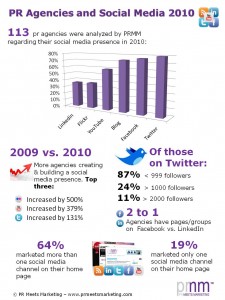 In February 2009, I wrote a post titled “Would YOU Trust a PR Firm without a Social Media Presence with Your Social Media Programs” to determine how many agencies were active in social media.
In February 2009, I wrote a post titled “Would YOU Trust a PR Firm without a Social Media Presence with Your Social Media Programs” to determine how many agencies were active in social media.
While anyone who establishes a Twitter account or LinkedIn Group is not automatically an “expert” on social media, I do believe that you should practice what you preach. This point, as well as the role of a corporate presence vs. individual contributors, generated a lot of discussion.
Since the original post, my position about individual contributors has evolved. I believe that employees are an integral, if not essential, part of a successful social media strategy. However, to simplify the data gathering and analysis, I opted to focus on corporate presences, recognizing that multiple individuals are contributing on behalf of the agency.
I’ve included a slideshare presentation below, images on flickr that you can share (including the infographic to the left), and the list of PR agencies accessible via Google Docs (All changes for 2010 are indicated in red. Please feel free to make an update and include a comment below).
Key Findings: PR Firms More Social in 2010
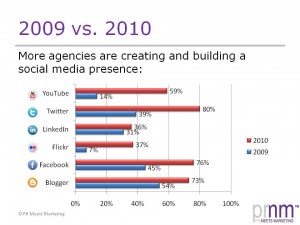
* PR agencies increased their social media presence in 2010, with Flickr (500%), YouTube (379%) and Twitter (131%) demonstrating the largest increases respectively.
* While most agencies didn’t link to their social media channels on their website in 2009, 83% included this on their home page in 2010.
* Twitter was the most popular social media channel, with 80% of PR agencies having a presence. 35% had followers numbering over 1000.
* 2 to 1, PR agencies had a Facebook Page or Group vs. a LinkedIn Group Page
Conclusions: What a difference a year makes
In just over 18 months, PR agencies have increased their presence on several social media channels. While content was not evaluated as part of this review, some agencies leveraged Flickr and YouTube to promote their clients. This raises an interesting issue about agencies becoming an active publishing entity.
If a PR agency ammasses thousands of followers or create a highly-ranked/influential blog, will it have the potential to become an informal media outlet itself? And if so, how will PR agencies manage this changing landscape? What do you think?
Methodology
I initially evaluated PR firms listed on O’Dwyer’s list of top 100 independent PR firms. This list was based on worldwide fees for firms with major US operations. As such, some prominent firms, such as Ogilvy & Mather, Ketchum PR and others. An additional 13 firms, who had proactively added their information to the PR Firm Social Media Wiki, were added to the 2010 review, yielding a total of 113 firms.
* I looked at if the agency had a blog, Twitter profile, Facebook page (both group and/or fan), LinkedIn Group, YouTube Channel or Flickr photostream.
* I didn’t categorize the type of PR each firm did – I took the list at its word
* If the blog wasn’t listed on the home page or easily found via a sitemap, I assumed there was none
* I searched on the agency’s name or common abbreviation as presented on their website. Anything more exotic or too cute, would not have been found
* For Twitter, I used Twitter search or tried to manually type in what seemed like an appropriate Twitter handle. Number of followers were based on number the week of September 20, 2010.
* I used the group search functions found on Facebook and LinkedIn respectively. I was looking for those who had proactively created a group page or claimed their fan page on Facebook. As such, LinkedIn Company pages were not included.
PR Is So Easy that Even a Caveman Can Do It
 You’ve probably seen the commercial about how Geico’s insurance is so easy, that a caveman can do it. The same is said about public relations. All you need to do is write a press release, distribute it over a wire and presto, media coverage will come. Or you just need to send an email to a reporter to have it instantly printed or broadcasted.
You’ve probably seen the commercial about how Geico’s insurance is so easy, that a caveman can do it. The same is said about public relations. All you need to do is write a press release, distribute it over a wire and presto, media coverage will come. Or you just need to send an email to a reporter to have it instantly printed or broadcasted.
While there are instances that this does happen, I think this overlooks how PR is more than securing coverage in the media. PR is an integral part of a company’s marketing team and provides incredible value when done well:
Message and Positioning
As outside counsel, public relations professionals bring fresh eyes to the company, product/service and industry. With a fresh perspective, we help executives refine their key messages and value proposition to their key audiences. We also help define the company’s position in the marketplace to help differentiate it from its competitors.
Building Relationships
We oftentimes overlook the importance of building relationships with the right influencers as an objective of PR. While reporters are a key target of relationship-building, PR professionals also can identify and introduce companies to other influencers (analysts, authors) and prospective partners and customers.
Customer Relations
Customers are the cornerstone of a successful business. PR professionals collaborate with clients and its sales team to identify and contact customers for marketing and PR efforts. This provides an additional channel for the company and customer to interact after a product/service has been delivered. And by telling the customer’s story, the client has a positive story to use for press and sales purposes, the customer is seen as a hero within his industry, and the sales person strengthens her relationship with that customer. It’s a win-win for everyone.
Conclusion
Beyond a media hit, PR has other tangible benefits for companies – message and positioning, building relationships, and customer relations. Now tell me, do you really want a caveman to handle these?
Any other areas that you’ve found PR instrumental?
Crisis Communication – San Bruno Fire

via flickr by achesonblog
At approximately 6:15 pm, we now know a huge gas explosion occured in San Bruno. First, please take a moment to send positive thoughts to the residents and families of the homeowners. If you live in the Bay Area and can give blood, they are requesting O-negative (assuming any and all blood types will be welcomed) and can find locations via the Blood Centers of the Pacific website.
Like the BP oil spill, the confusion around such an explosion is understandable. What perplexed me was an on-air phone interview with a PG&E spokesperson. When the reporter inquired if the gas line was PG&E’s, the spokesperson purposely didn’t answer the question.
Since crisis communications on this level isn’t my core expertise, I’m interested in hearing your thoughts on how one would handle a situation like this. Here are my initial thoughts:
1. Express Sympathy: The spokesperson did communicate that the company’s thoughts were with the families of this tragedy. This was a good sign, demonstrating the company’s empathy with the victims.
2. Answer the Questions: I recognize that PG&E may face legal action once everything is sorted out over the next few days. But by not answering a direct question regarding “was this a PG&E gas line?”, PG&E seemed to be more concerned about evading responsibility. Maybe a better response would have been “At this time, our concern is with the families and we are working with the authorities to ensure that the immediate danger has passed.”
Update (9/9/10, 10:19 pm): Per an email sent to news outlet (source: CBS 5 News), PG&E acknowledges that the gas pipeline was the company’s and plans to take full responsibility if it’s found to be the company’s fault. Nothing on PG&E’s website at this time.
3. Provide Valuable Information: In a 24/7 news cycle, news outlets are seeking to get information out as quickly as possible and companies are seeking to minimize potential risk. With that said, the interview seemed to be premature. The spokesperson didn’t seem well-prepared and didn’t provide tangible information. Rather, there was (still is) an opportunity for PG&E to discuss the steps they are taking to bring power back to the area.
4. Give Back to the Community: There is a great need for the families displaced by this crisis. While there needs to be a balance, PG&E can demonstrate its corporate care by donating to shelters, relief organizations, and supporting a blood drive amongst employees.
Again, thoughts are with the families and victims.
Update (9/10/10): Last night, the President of PG&E did a press conference around 11:30 pm at night. Unlike the spokesperson earlier, the president was prepped and repeated three messages: 1) ongoing investigation so cannot speculate, 2) working to make the area safe and 3) thoughts are with the families and if this is PG&E’s responsibility, they will “make it right”. While short on detail, these statements addressed my points above.
Guest Post – Go Virtual for your Next Press Event
 I asked my former colleague, Dennis Shiao, to share his insights on how virtual events can augment PR and marketing. Briefly, Dennis is an evangelist, strategist and practitioner of virtual events. Dennis provides strategic consulting to clients on their virtual events and has managed virtual event campaigns for Cisco, HP, Oracle and Microsoft, among others. Dennis blogs about virtual events and virtual worlds at “It’s All Virtual” and is a frequent author and speaker. Dennis can be found on Twitter at @dshiao.
I asked my former colleague, Dennis Shiao, to share his insights on how virtual events can augment PR and marketing. Briefly, Dennis is an evangelist, strategist and practitioner of virtual events. Dennis provides strategic consulting to clients on their virtual events and has managed virtual event campaigns for Cisco, HP, Oracle and Microsoft, among others. Dennis blogs about virtual events and virtual worlds at “It’s All Virtual” and is a frequent author and speaker. Dennis can be found on Twitter at @dshiao.
Virtual events are seeing strong adoption. It all started with the virtual trade show, a 2.5D representation of a physical trade show, complete with a lobby, auditorium, exhibit hall, networking lounge and more. A number of formats soon followed, including the virtual career fair, virtual sales meeting, virtual product launch and virtual partner summit. In addition, we’re now seeing businesses leverage virtual platforms for “corporate university” or e-Learning.
It will be exciting to see the new and innovative formats that marketers, publishers, event managers and business owners develop in 2010 and beyond. I have a format that is well suited for virtual: the press event.
In many ways, the benefits of a virtual press event are the same as a virtual trade show. The host, along with attendees, presenters, etc. participate via the web and save on travel costs, lodging costs, shipping costs and “out of office time.” In addition, all activities within the environment are tracked. And, the environment can remain available long after the live “event” concludes.
Additional benefits of producing your press event virtually:
Global Reach
In the past, press events were planned in “road show” fashion, in which you visited major cities that had the highest concentration of your target media publications. With virtual, you can host a single event and capture a global audience. Alternatively, you can leverage a single virtual platform and stage live events based on regional timezones, to target business hours in North America, then EMEA, then Asia Pac. Your PR efforts can now have a wider reach at a lower cost.
Convenient Access to Your Executives
In a physical setting, it can be a logistical challenge to schedule and coordinate access from press members to your executive team. With virtual, executives can interact with larger audiences more efficiently. For instance, you might place your CMO in a moderated chat room and take questions from an audience of 1,500. Imagine doing that in a physical setting!
Invite Customers and Prospects
Increase your ROI by also inviting customers and prospects to the event. Do your require press credentials to gain access to certain materials? No problem. Virtual event platforms provide role-based access, which means that an access profile can be applied to your customers and prospects that are different from press members. Any PR that you do affects your customers, too, so include them when sharing the news.
Use Activity Paths to Follow Up Appropriately
Whether customer, prospect or press member, study activity paths in the virtual event to determine effective follow-up plans. Did a reporter visit your booth ten times, then ask numerous questions in the group chat area? Schedule a one-on-one conference call with your Senior Product Manager, to ensure that the reporter has all the info she needs. Similarly, follow up with prospects to move them further along in the sales cycle.
Conclusion
I believe virtual events can be the definition of “PR meets Marketing”. As PR and Marketing look to Web 2.0 to broaden reach and engagement, consider virtual events as one more tool in your arsenal.
Interested in being a guest author? Send me an email with your proposed topic and how it relates to PR Meets Marketing. Self-promotional content will not be considered.
About
Favorite Service
Recent Comments
- on Going Virtual Isn’t Necessarily the Answer to Replacing Your Physical Events
- on Going Virtual Isn’t Necessarily the Answer to Replacing Your Physical Events
- on Going Virtual Isn’t Necessarily the Answer to Replacing Your Physical Events
- on Going Virtual Isn’t Necessarily the Answer to Replacing Your Physical Events
- on Going Virtual Isn’t Necessarily the Answer to Replacing Your Physical Events
Ads by Google
Favorite Books
Marketing Blogs
PR Blogs
- KD Paine's Measurement Blog
- Micro Persuasion
Virtual Events & Meetings Blogs
- Cisco Virtual Environments
- It's All Virtual
- The Webinar Blog
- Virtual Edge Institute

 Follow
Follow Cece Salomon-Lee is director of product marketing for Lanyon Solutions, Inc. and author of PR Meets Marketing, which explores the intersection of public relations, marketing, and social media.
Cece Salomon-Lee is director of product marketing for Lanyon Solutions, Inc. and author of PR Meets Marketing, which explores the intersection of public relations, marketing, and social media. 